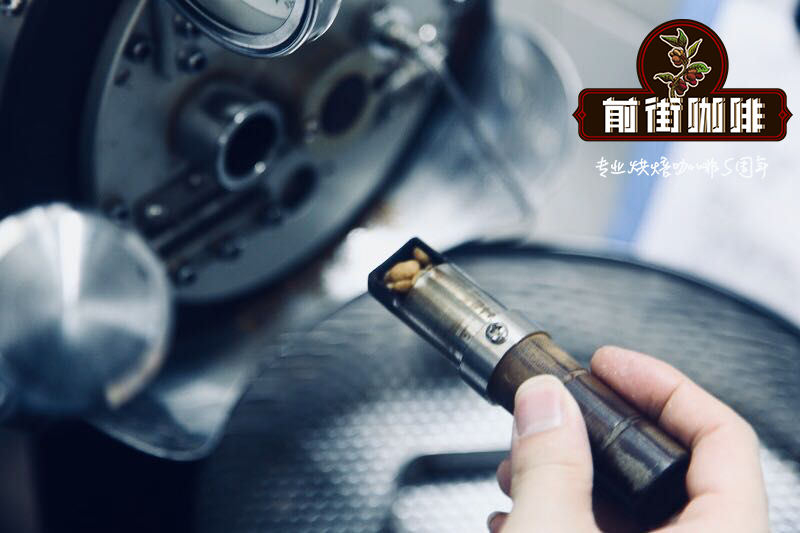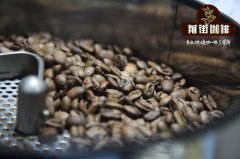Coffee Art and Technology-Coffee plants and Classification-Why is the flavor of Katim coffee beans so bad?

Professional coffee knowledge exchange more coffee bean information please follow the coffee workshop (Wechat official account cafe_style)
Katim coffee beans
Coffee plants and plant classification
Botanical classification of coffee
Characteristics of Rubiaceae in Coffee
Characteristics of Rubiaceae
Characteristics of three kinds of coffee beans
Let's subdivide the coffee plant botanically. Coffee is a shrub, part of the Rubiaceae family. There are only three taxonomic species out of 73. Arabica, Robsta and Liberia are important in today's world market. They produce three to 12 tons (2.8 to 109000 tons) per hectare. Each breed needs a specific number of trees to create descendants.
Arabica
Arabica (Arabica), the discovery and cultivation of the original plant to serve today's coffee drinks, may have originated in present-day Ethiopia. Although Arabica naturally contains the least caffeine, it has the most subtle and satisfying taste.
Arabica coffee trees usually grow 12 to 20 feet (3.7 and 6 meters) tall. Most Arabica coffee is picked by hand. This is partly because the land machines that grow in the mountains are usually inaccessible, but mainly because coffee pickers use ladders or a hook to choose the most mature coffee beans. The best farms are selected several times a season, and three times are the most common to ensure the choice of ripe coffee beans.
There are two varieties of Arabica: Bourbon and Typica. From these two varieties, the other sub-varieties are changed, and the known plant varieties are obtained.
Coffee Caturra
Coffee Bourbon
Bourbon
Many people think that this coffee is produced by the world's finest Arabica heirloom. The problem is that Bourbon requires a lot of space and care, is prone to disease, and trees take a long time to bear fruit and have a short life cycle. Bourbon produces coffee beans about more quickly than Typica 1/3 and its coffee fruit ripens faster, but they are more fragile. Bourbon grows best at an altitude of 3500 to 6500 feet (1067 to 1981 meters).
Typica
The variety, generally considered to be the original type of coffee, has a conical shape and is growing at a tilt. Although it grows well (slightly higher than Bourbon) and higher than most varieties, it is ten to 13 feet (3 to 4 meters) tall and tends to be less productive.
Caturra
This variety, found in Brazil and developed from Bourbon cuttings, is designed as a hardy but highly maintainable plant. It grows luxuriantly below 3500 feet (1067 meters) above sea level, making it easy to select coffee fruits and grow close to the ground. Many concerned coffee-growing countries, such as Costa Rica, grow almost completely Caturra.
Other Arabica varieties
Which varieties are grown on coffee farms depends on the first soil quality, climate, disease resistance, productivity and yield are considered second. Quality finally, if at all, because coffee will not grow, is not a good crop.
The main varieties of Arabica (except Bourbon,Typica,Caturra) and their basic characteristics are as follows:
Coffee Blue Mountain
Coffee Catimor
Blue Mountain
The unique species of Blue Mountain, most of which grow in Jamaica, may be descendants of Typica, but its exact origin is still unknown. This is a long bean, famous for its great flavor and disease resistance, but it will not flourish in other areas. It is true that the Blue Mountains are best above 5000 feet (1524 meters) above sea level.
Catimor
Catimor Katim, developed in Portugal in the 1950s, comes from the Timor breed. It grows rapidly, produces high yields, and is at medium altitude, especially resistant to rust, which makes it attractive to many farmers. This is a mixture of Arabica and Robusta, which is considered to be the best coffee hybrid. It requires a lot of fertilization and rainfall.
Coffee Catuai
Coffee Mundo novo
Catuai
The breed is a cross between Caturra and enthusiastic Mundo novo. It is wind resistant and sturdy, making it suitable for stormy environments. Like Caturra, it is high maintenance but produces quality coffee.
Coffee Maragogype
Coffee Timor
Coffee Robusta
Maragogype
It was first found in Brazil that this descendant of Typica has grown larger and is taller than a family heirloom. It does not produce high yields, but its beans are large. Two Mariogype descendants are more popular. Pacamara is a hybrid PACA that grows in Panama. It offers a large size and award-winning aroma and taste. Geisha is a hybrid from Ethiopia Maragogype, which first grew in the early twentieth century. It is a precious connoisseur looking for a soy and satisfying sensory taste.
Pache Comum
The varieties found in Guatemala are likely to be descended from Typica, but do not consider high-quality coffee. This tenacious plant ranges from 3500 to 6000 feet above sea level.
Timor
Named the Indonesian island and its origin related Catimor variety, Timor is thought to have been found during the period of coffee wilt in the 1860s. This is a cross between Arabica and Robusta. Some industry experts regard East Timor as the savior because it seems to offer the best taste of Arabica and the disease resistance of Robusta. But some people fear that it provides too little flavor, and they think that Robusta is disguised as Arabica.
If a serious plant disease did not spread to several key coffee-growing areas in the 1860s, Arabica might be the only coffee grown in the world. Replace two other coffee varieties: Robusta and Liberica.
Coffee Canephora
Coffee Liberica
Robusta
Coffee growers once touted Robusta (Canephora coffee tree), which has twice the caffeine content of Arabica and high disease resistance, making it the best alternative to Arabica. Robusta coffee trees are shorter, making their fruits easier to pick, and they need less space between trees, allowing them to plant more. In terms of care and irrigation, Robusta quickly became a world commodity.
On the other hand, Robusta provides nuances in the taste of Arabica coffee. Good Robusta is comparable to low-grade Arabica in quality. This type of coffee is sold and traded as a commodity in the United States and Europe. Almost all of the best sales are espresso blends. The best attribute of Robusta is its body.
Liberica
In the 1870s, leaf rust was rampant throughout the Arabica coffee plantation. The taste of Liberica does not match the best Arabica coffee, and its yield per plant is lower than that of Robusta. At the same time, strong Arabica variants such as Caturra replace more vulnerable Bourbon planting.
Today, Liberica is booming in Southeast Asia. Sometimes, a small amount is available on the Internet, but it has no real market penetration into the United States or Europe.
Important Notice :
前街咖啡 FrontStreet Coffee has moved to new addredd:
FrontStreet Coffee Address: 315,Donghua East Road,GuangZhou
Tel:020 38364473
- Prev

The relationship between the new coffee variety Castillo and Catimor is worse than Katim's Robusta.
Professional coffee knowledge exchange more coffee bean information please follow the coffee workshop (Wechat official account cafe_style) this morning Elixr saw a Colombian coffee variety is unseen Castillo of course, of course, try to drink it, it seems to be good to wait until half a cup, feel the heartbeat and tremble slightly feel wrong quickly look up the information on the Internet.
- Next

The origin of Indonesian Kopi Luwak popular science-is Kopi Luwak Arabica beans or Robota beans?
Professional coffee knowledge exchange more coffee bean information please follow the Coffee Workshop (Wechat official account cafe_style) movie all the way to The Bucket List Jack Nixon (Jack Nicholson) plays a rich man with cancer, always sets up a distilled coffee machine in the ward, and from time to time sarcastically satirizes the blue-collar Morgan Freeman (Morgan Freeman).
Related
- Detailed explanation of Jadeite planting Land in Panamanian Jadeite Manor introduction to the grading system of Jadeite competitive bidding, Red bid, Green bid and Rose Summer
- Story of Coffee planting in Brenka region of Costa Rica Stonehenge Manor anaerobic heavy honey treatment of flavor mouth
- What's on the barrel of Blue Mountain Coffee beans?
- Can American coffee also pull flowers? How to use hot American style to pull out a good-looking pattern?
- Can you make a cold extract with coffee beans? What is the right proportion for cold-extracted coffee formula?
- Indonesian PWN Gold Mandrine Coffee Origin Features Flavor How to Chong? Mandolin coffee is American.
- A brief introduction to the flavor characteristics of Brazilian yellow bourbon coffee beans
- What is the effect of different water quality on the flavor of cold-extracted coffee? What kind of water is best for brewing coffee?
- Why do you think of Rose Summer whenever you mention Panamanian coffee?
- Introduction to the characteristics of authentic blue mountain coffee bean producing areas? What is the CIB Coffee Authority in Jamaica?

